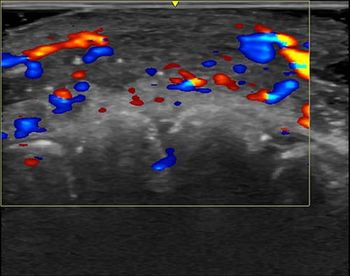
Quantitative CT Identifies Airway Changes in Smokers Without Symptoms
QCT can pick up on small airway changes in smokers that are not yet visible on CT scans.
Using quantitative CT (QCT) can help providers pinpoint the small changes in airways that begin to pop up in smokers who have not yet exhibited any substantial symptoms or effects.
In studies looking at emphysema, expiratory airflow obstructive, and airway wall thickening, QCT, as a minimally invasive technique, is considered the gold standard for evaluating the minimal morphologic changes that are linked to smoking. But, until now, there has been relatively little research on smokers who do not yet have findings that show up on CT.
Using a normalization scheme with QCT to evaluate airway parameters, though, can help providers investigate structural airway changes that exist even if a smoker has a normal-looking CT, said a multi-institutional team of researchers in a study published this week in the
“This study indicates that QCT could help identify minimal changes in airways and could help in understanding pathophysiological airway changes induced by smoking,” said the team led by Eric A. Hoffman, Ph.D., professor of radiology, medicine, and biomedical engineering at the University of Iowa.
Overall, their analysis showed a diffuse luminal narrowing of airways over all generations, no change in wall thickness of proximal bronchi between the first and third generations, and thinned distal airway walls for fourth and later generations.
To reach these conclusions and evaluate airway parameters using QCT, the team conducted a retrospective analysis, examining CT scans conducted between January 2014 to December 2016 from 222 non-smokers and 69 smokers who averaged 22.8 pack years. The images were captured with a 128 multi-detector CT without iterative reconstruction, and the team performed multiple linear regressions of tracheal wall thickness, diameter, luminal area, adjusting for age, sex, and height.
Specifically, the team said, smokers tended to have smaller airway diameters, but only 8 of 22 regional airways selected (36.4 percent) were statistically significant. In addition, the wall area of 83.4 percent of selected airways was also significantly decreased in smokers. While the mechanism behind the distal airway wall thinning seen in smokers was unclear, the team said it could be a result of increased mucus secretion and inflammatory cell infiltration into the wall tissue of the proximal airways due to the accumulation of toxic particles.
Based on these results, the team said, using a normalization scheme could have both research and clinical benefits, enabling providers to evaluate airway narrowing to determine how far it is out of the normal range.
“We believe with a normalized scheme, it may be easier to identify early-stage alterations of a smoker’s airways and eventually prevent disease development and initiate early treatment,” the team said. “With further multi-center studies with larger cohorts, this normalization scheme can be modified and strengthened to apply in various clinical situations where different CT parameters are used.”
For more coverage based on industry expert insights and research, subscribe to the Diagnostic Imaging e-Newsletter
Newsletter
Stay at the forefront of radiology with the Diagnostic Imaging newsletter, delivering the latest news, clinical insights, and imaging advancements for today’s radiologists.




























